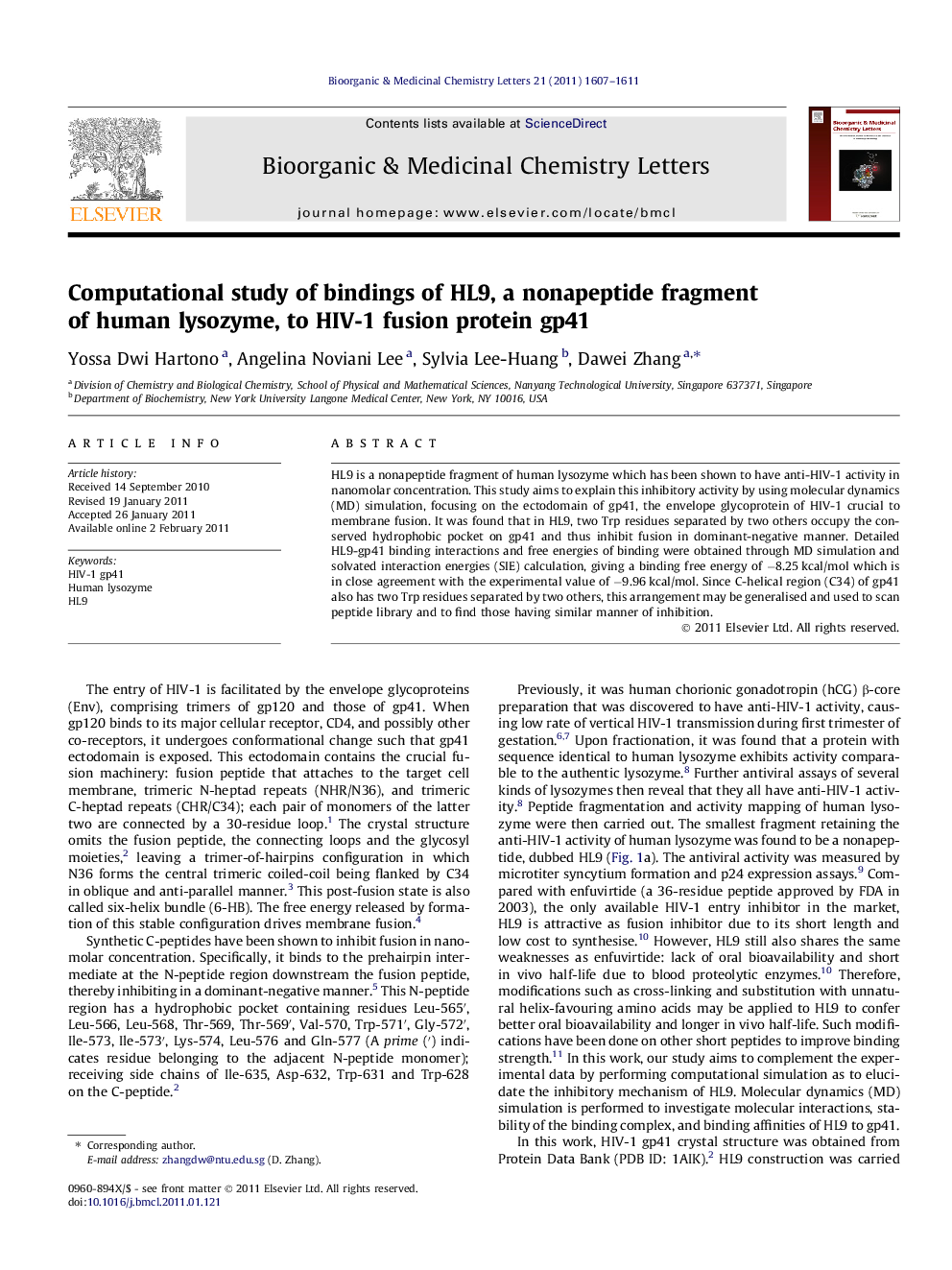| Article ID | Journal | Published Year | Pages | File Type |
|---|---|---|---|---|
| 1371403 | Bioorganic & Medicinal Chemistry Letters | 2011 | 5 Pages |
Abstract
HL9 is a nonapeptide fragment of human lysozyme which has been shown to have anti-HIV-1 activity in nanomolar concentration. This study aims to explain this inhibitory activity by using molecular dynamics (MD) simulation, focusing on the ectodomain of gp41, the envelope glycoprotein of HIV-1 crucial to membrane fusion. It was found that in HL9, two Trp residues separated by two others occupy the conserved hydrophobic pocket on gp41 and thus inhibit fusion in dominant-negative manner. Detailed HL9-gp41 binding interactions and free energies of binding were obtained through MD simulation and solvated interaction energies (SIE) calculation, giving a binding free energy of â8.25Â kcal/mol which is in close agreement with the experimental value of â9.96Â kcal/mol. Since C-helical region (C34) of gp41 also has two Trp residues separated by two others, this arrangement may be generalised and used to scan peptide library and to find those having similar manner of inhibition.
Keywords
Related Topics
Physical Sciences and Engineering
Chemistry
Organic Chemistry
Authors
Yossa Dwi Hartono, Angelina Noviani Lee, Sylvia Lee-Huang, Dawei Zhang,
